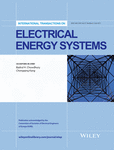Journal list menu
Export Citations
Download PDFs
A proposal of a qualitative index for mechanical withstand safety margin analysis of transformers
- First Published: 14 November 2016
Management and control strategy of a hybrid energy source fuel cell/supercapacitor in electric vehicles
- First Published: 01 December 2016
An adaptive fault line selection method based on atomic comprehensive measure values for distribution network
- First Published: 15 December 2016
Multiobjective transmission expansion planning problem based on ACOPF considering load and wind power generation uncertainties
- First Published: 09 December 2016
Distributed generation for economic benefit maximization through coalition formation–based game theory concept
- First Published: 10 February 2017
ERF-based fault detection scheme for STATCOM-compensated line
- First Published: 09 December 2016
Application of stud krill herd algorithm for solution of optimal power flow problems
- First Published: 16 January 2017
PQ decoupled 3-phase numerical observability analysis and critical data identification for distribution systems
- First Published: 26 December 2016
Study on PD pattern recognition of XLPE cable under oscillating voltage based on optimal discriminant vector
- First Published: 21 December 2016
A new approach for DG planning at the viewpoint of the independent DG investor, a case study of Iran
- First Published: 17 January 2017
Gaussian mixture model-based neural network for short-term wind power forecast
- First Published: 23 January 2017
This paper proposes a Gaussian mixture model-based neural network model forecast the short-term wind power generation. The contribution of the paper lies in presenting an enhanced radial basis function neural network model with better convergence property for forecasting application. The Gaussian mixture model is adopted to substitute the traditional single Gaussian basis function in each neuron in the hidden layer and is with better initial settings of parameter values. Actual measured wind power output data are adopted to implement the proposed model. Test cases of wind power obtained by autoregressive integrated moving average, radial basis function neural network, support vector regression, and the proposed method are then under comparisons. Results show that the proposed method is superior to the compared methods in short-term forecasting accuracy while the computational efficiency is maintained.
Optimal scheduling of the plug-in electric vehicles aggregator energy and regulation services based on grid to vehicle
- First Published: 06 April 2017









